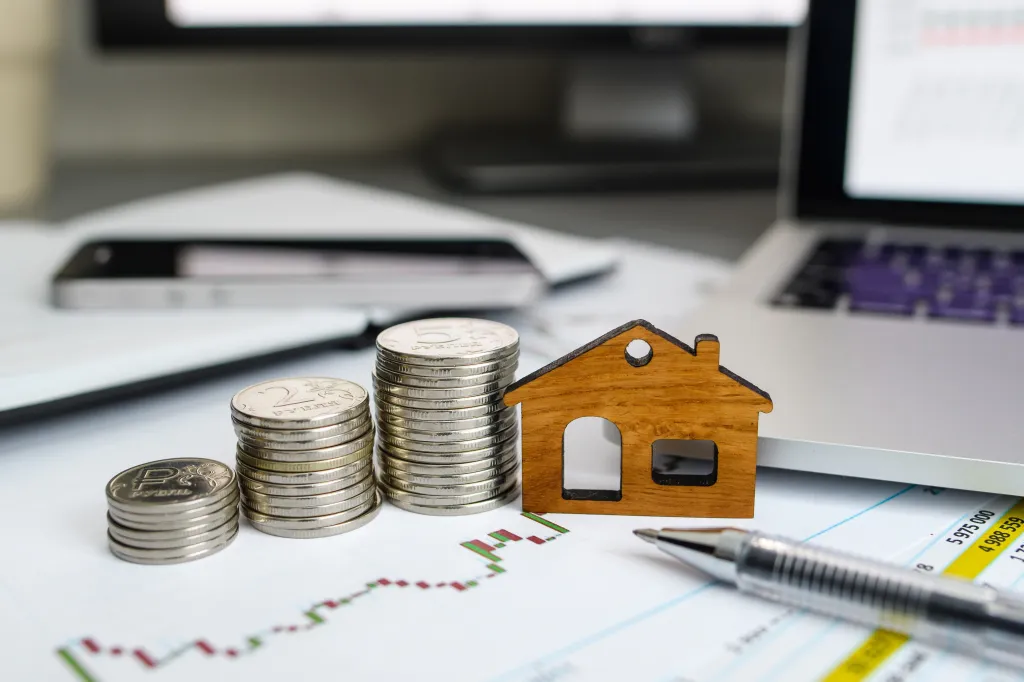TLDR
-
With a little planning, clear goals and smart saving habits, you can build momentum toward owning your first home.
-
The First Home Savings Account (FHSA) is designed to incentivise and help first-time buyers save faster. Other tax-efficient options, like a TFSA or RRSP, can also support your savings goals.
-
Homeownership costs go beyond the down payment, so be sure to budget for living expenses, bills and other essentials along the way.
-
Why not get creative? It may be worth exploring alternative routes to homeownership such as buying with friends or rent-to-own options.
If you’re a young person living in Canada and looking to jump into the housing market, congrats! You’re in good company. In fact, 54% of Canadians aged 19 – 39 believe homeownership is within reach, and 84% say it’s a worthwhile investment.
If homeownership is a goal for you, financial education, early planning, consistent saving and the smart use of financial tools can help you build the foundation you need to make it happen.
Here’s how to bring the dream of your first home closer to reality.
Preparing to buy your first home
Buying a home starts with some housekeeping, financially speaking. Understanding your credit worthiness, thinking about how you’re going to save for your down-payment and building savvy spending habits now will help prep you for homeownership. It’s not a process that happens overnight, so it’s important to plan ahead to be financially ready when the time is right to buy.
Set yourself up for success
-
Set a target: Know the average home price in your ideal area and estimate the down payment you’ll need (Houseful can help here!)
-
Set a timeline: Attach a date to your goal. This helps keep your efforts focused.
-
Set monthly goals: Monthly goals feel less overwhelming and more achievable.
Check (and improve) your credit score
Lenders use your credit score as a key criteria when deciding whether to approve your mortgage application and in determining how much they’re willing to lend you. A better score can unlock a larger mortgage or potentially better rates. Not sure what your current credit score is? If you’re an RBC client, you can check your credit score through the RBC mobile app for free, or check it through Canada’s credit bureaus: Equifax or TransUnion.
If you want to boost your credit score in advance of applying for a mortgage, here are a few ways to do it:
-
Pay bills on time – Even one missed payment can hurt your score
-
Keep credit usage low – Try to use less than 30% of your available credit
-
Avoid applying for new credit – Especially in the months leading up to your mortgage application
-
Pay down existing debt – Especially high-interest credit card balances
-
Keep old accounts open – A long credit history helps boost your score
Fine tune your spending habits
Working towards a big (exciting) goal – like buying your first home – can mean rethinking where you currently spend your money. While some young Canadians are making significant sacrifices to achieve their goal, small steps can make a big difference too. Here are some ways to reduce unnecessary expenses:
-
Find areas to trim in your current budget – Think subscriptions, ride shares and eating out
-
Prioritize what brings you joy and cut the rest – If it doesn’t add real value to your day-to-day, it may not be worth it
-
Resist impulse buys – These could derail your savings efforts
Understand the Canadian home buying process
Getting familiar with the “how to’s” of buying a home will make the process feel far smoother in the future. Here are the key steps Canadians should know:
Mortgage pre-approval
Getting pre-approved for a mortgage gives you a clear idea of how much you can borrow – and at what rate. It’s key information to have when deciding on a price range! When pre-approving, lenders will look at your:
-
Income
-
Debt
-
Credit score
Tip: When you meet with your lender, be prepared to show proof of income with a letter from your employer.
Finding a home
With a mortgage pre-approval in hand, you can begin the exciting part: looking for a property! It’s strongly recommended to work with a licensed realtor to help you navigate the process – and the area. They can help with things such as:
-
Understanding the pros and cons of specific neighbourhoods and locations
-
Sharing insights on common pitfalls
-
Expanding your search power—they might know of properties you can’t find online
-
Act as emotional support. An objective person in your corner can help you make rational decisions
Tip: Ask your friends for a trusted realtor referral.
Making an offer – and closing the deal
Once you find “the one,” your agent can walk you through the process of making an offer, including appropriate conditions (such as a home inspection and financing). Once the offer is accepted, you’ll work with a real estate lawyer to finalize the closing details and settle any other fine print, including when you can pick up your keys!
Tip: Bidding wars are common but be sure to stick to your budget, no matter how competitive it gets.
Find a savings tool that works for you
Let’s be real: saving up to buy a home can feel like one of the biggest challenges young Canadians face today. But with a little effort, the help of dedicated savings vehicles and new mortgage measures introduced by the government, affording that first home is possible within your timeline.
If you’re not sure what best works with your goals and lifestyle, speak with a financial advisor.
First Home Savings Account (FHSA)
The First Home Savings Account (FHSA), which became available in 2023, lets you save up to $8,000 per year to a maximum of $40,000, tax-free, toward your first home. Contributions are tax-deductible, and qualified withdrawals – including investment growth – are tax-free too.
You can contribute up to $8,000 per year, so starting early helps you maximize the full benefit.
Beyond the First Home Savings Account, there are other savings options that can also help you save for your down payment and can be combined for maximum benefit.
Tax-Free Savings Account (TFSA)
A TFSA lets you grow your savings tax-free and withdraw funds at any time without penalties. Any Canadian 18+ can open a TFSA, making it a great option if you’re not eligible for an FHSA or you’ve maxed out your contributions. Within a TFSA you can invest a mix of investments, such as GICs, ETFs or mutual funds, giving you the potential to grow your savings faster than in a regular account.
RRSP Home Buyer’s Plan
With the federal government’s Home Buyers’ Plan (HBP), you can use up to $60,000 of your Registered Retirement Savings Plan (RRSP) savings to help finance your down payment on a home. This amount bumps up to $120,000 for a couple. Another great perk is that the withdrawal is not taxable as long as you repay it within a 15-year period.
To qualify, the RRSP funds must be in your account for at least 90 days before you withdraw them, and you’ll have to show a signed agreement to buy or build a home.
Budget for more than just the down payment
Buying a home involves costs beyond the down payment. As you save for homeownership, don’t forget about the other expenses you’ll need to cover.
Closing costs
-
Closing costs – Legal fees, title insurance and other admin costs (typically 1.5 – 4% of the home’s purchase price in Canada)
-
Land transfer tax – A provincial (and sometimes municipal) tax based on your home’s price
-
Moving expenses – Whether it’s renting a truck or hiring movers
Homeownership costs
-
Monthly bills – Utilities, internet, property taxes and home insurance
-
Maintenance and repairs – From leaky faucets to seasonal upkeep
| Category | Details |
| Closing Costs | Legal fees, land transfer taxes, little insurance appraisals |
| Home Inspection | Pre-purchase inspection recommended |
| Property Taxes | Annual municipal tax based on home value |
| Maintenance | Annual repairs, seasonal work (e.g. HVAC, roofing, snow removal) |
| Utilities | Electricity, gas, water |
| Condo Fees | If applicable, includes maintenance, building insurance |
| Home Insurance | Mandatory for mortgage approval |
| Moving Costs | Hiring movers, truck rental, supplies |
| Furniture & Décor | Furnishing key rooms + paint, window coverings |
Don’t forget about living costs
Homeownership shouldn’t mean giving up everything else. You’ll want to avoid being “house poor”— where most of your income goes toward the home and little is left for living.
Be sure your budget includes room for essentials like groceries, transit and healthcare, emergencies and surprise costs, plus little luxuries now and then… like that first dinner party in your new place!
More ways to make home ownership affordable
Saving is obviously a big part of starting your homeownership journey. But there are other ways to help make your dream a reality. Here are some ideas to explore:
Government programs
-
Land Transfer Tax Rebates: Land transfer tax rebates are available to first-time homebuyers in the provinces of Ontario, British Columbia and Prince Edward Island. There is also a land transfer tax rebate available for first-time homebuyers in the city of Toronto.
-
First-Time Home Buyers’ Tax Credit (HBTC): First-time homebuyers can claim up to $10,000 for the purchase of a qualifying home. At a 15% tax rate, the $10,000 claim equals a one-time $1,500 tax reduction.
-
GST rebate: Effective May 27, 2025, the federal government has introduced a GST rebate for first-time home buyers who are purchasing a new build. The rebate will remove the GST on new homes at or under $1 million and lower it on homes between $1 million and $1.5 million for all first-time buyers.
Mortgage rule changes
Recent changes to mortgage rules are making it easier for Canadians – especially first-time homebuyers – to purchase their first home.
One recent change is the introduction of 30-year mortgage amortizations (the term of the loan) for all Canadian buyers of new builds – an increase from the standard 25-year amortization period. A longer amortization period can reduce your monthly payments.
Another meaningful move is the increase to the insured mortgage price cap. To reflect current housing market realities, especially in expensive urban hubs like Toronto or Vancouver where many buyers do not have the required 20% downpayment, Canadian homebuyers can get an insured mortgage for a home valued up to $1.5 million – an increase from $1 million.
Explore less traditional paths to home ownership
If the traditional path doesn’t fit, try one of these routes:
-
Co-buying: team up with friends or family to buy a home
-
Co-living: consider roommates to help make monthly bills more manageable
-
Look into rent-to-own options
-
Consider new construction (down payments are made in stages)
-
Consider smaller towns: Explore less competitive real estate markets
Get one step closer to homeownership
Homeownership is an exciting goal for many Canadians and RBC Mortgage Specialists are available to give you personalized advice to help you reach your goal faster.






